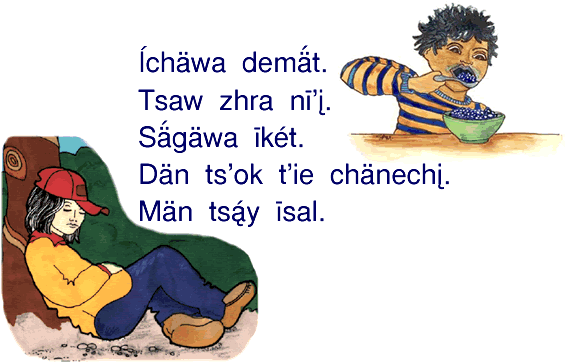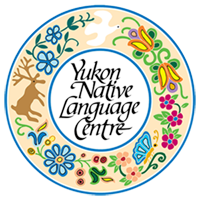Back to Northern Tutchone Learning Resources page
Northern Tutchone is spoken in the Yukon communities of Mayo, Pelly Crossing, Stewart Crossing, Carmacks, and Beaver Creek. The traditional harvesting areas of the Northern Tutchone people included the McQuesten and Stewart Rivers in the north, the White river in the east, the Big Salmon drainage in the south and the Selwyn Mountains to the east. Groups of Northern Tutchone lived at Fort Selkirk and Big Salmon when the river boats were still in operation on the Yukon River. After the river boats stopped running, most of the Selkirk people moved to Pelly and many of the Big Salmon people relocated to Carmacks or Whitehorse.
Research and Documentation
Early documentation of the Northern Tutchone language was carried out in the 1890’s by Archdeacon Thomas Canham, a Church of England missionary who was based for several years at Fort Selkirk. Canham published a short Wood Indian Dictionary in 1898, but the bulk of his translations and linguistic notes remain in manuscript form. Preliminary noun dictionaries for the Mayo and Selkirk dialects appeared in the early 1970’s. The Northern Tutchone practical orthography was developed by John Ritter of the Yukon Native Language Centre. Literacy Workshops for Northern Tutchone have been held since 1984. More than twenty publications in and on Northern Tutchone are currently available from the Yukon Native Language Centre. These include Language Lesson Booklets and Tapes, multimedia Computer Books and corresponding Print Story Books, and Literacy Workshop reports. Of particular note are two books in Northern Tutchone written by Gertie Tom.
School Programs
There have been Northern Tutchone school programs in Mayo, Pelly Crossing and Carmacks for more than a dozen years. The Beaver Creek school program began in 1998. There is also a preschool program in Carmacks.
